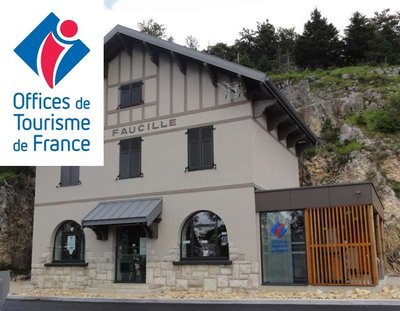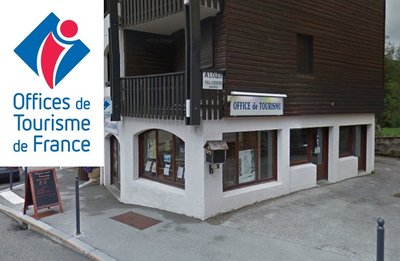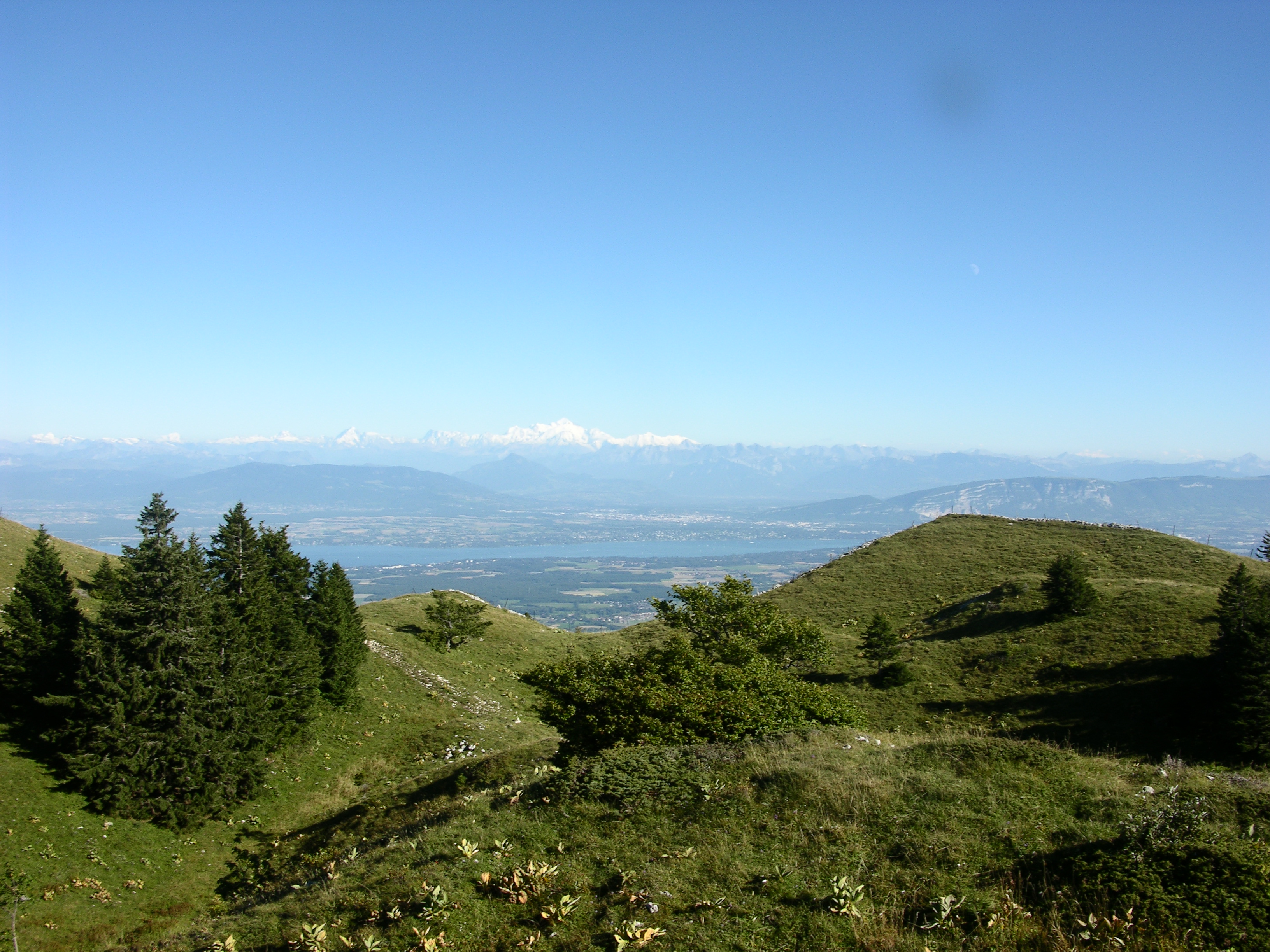
La Faucille - Les Deux Montronds
The Petit Montrond DTT transmitter, located at 1532 m altitude at the top of the La Faucille slopes, is a landmark visible from the Jura and Lake Geneva plains thanks to its 79 m height. Built in 1961-1962 in the commune of Mijoux, it has been in service since 1962 and is the main relay station for broadcasting in the Ain region. Initially managed by ORTF, it was transferred to TDF in 1975."
4 points of interest
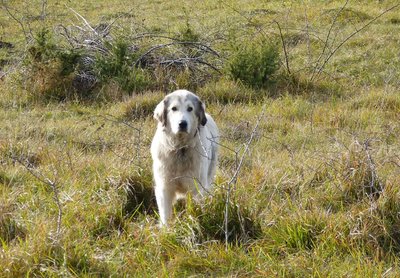
Patou - PNRHJ / Gilles Prost Pastoralism and agricultureThe Patou dog
From birth, the Patou dog lives alongside sheep in the sheep-pen, which allows it to build a strong relationship with the herd. The Patou’s role is not to shepherd the herd, but rather to protect it from predator attacks (wild animals, stray dogs, etc.). Its presence and its large size prevent many attacks. The dog’s first reaction is to bark and to place itself between the intruder or intruders and the herd. If the intruders do not heed this warning, the dog may then launch a physical attack.
When you come across a protection dog, be calm and adopt a passive attitude. Do not shout, do not run, and do not threaten the dog with a stick, it could interpret this behaviour as an attack. Reassure the animal by placing your coat or your backpack between the dog and yourself. If you have a dog, keep it on-lead.
Head around the herd, the dog will sniff you and peacefully accompany you on your way to be sure of your intentions before returning to the herd.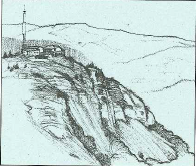
Relais de télévision Petit Montrond - PNRHJ / Roman Charpentier History & HeritagePetit Montrond, a television relay
From the 1950s, touristic and sporting facilities became the features of a new landscape. Telecommunication relays, ski lifts, cable car “stations”, lodgings/restaurants built at the top of ski slopes transformed the mountain into a leisure area.
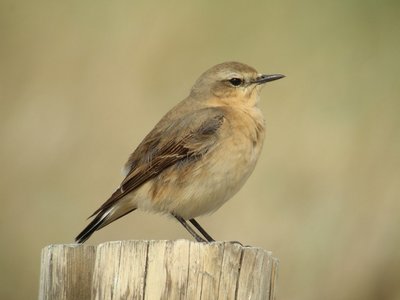
Traquet motteux - Fabrice Croset FaunaThe northern wheatear
A visitor during the summer season, the northern wheatear settles in the Jura’s highest lawns. Visibly perched on a stone, dipping its tail, you will be able to best make out its white rump on one of its short flights. An insectivore, it hunts small insects to feed its chicks in a nest that it makes up on the ground.
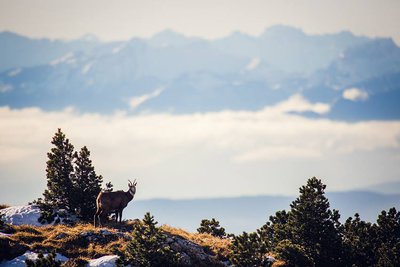
Chamois - PNRHJ / Léo Poudré FaunaThe Chamois
The chamois does not occupy the same territory in summer as in winter. In the summer, this animal heads up to the high mountain summits and hides in the cliffs and screes. In the winter, bad climate conditions and the lack of food force it down to lower altitudes or ridge areas where snow is blown away by the wind.
Description
(1) From the La Faucille Tourist Office, follow the yellow markings and join the white path that passes under the Montrond ski lift. It also passes under the toboggan run structure. A few meters further on, you will come to an intersection.
(2) Turn left to begin the ascent. The path becomes a trail that winds through the trees, runs alongside the ski slopes and follows the ski lifts. You will climb 419 steps to reach AU PETIT MONTROND. Along the way, you will come across benches and panoramic platforms.
(3) At AU PETIT MONTROND (1,540 m), the view is breathtaking: a 360° panorama with Mont Blanc, the entire Alpine arc, Geneva, the Pays de Gex plain, and Lake Geneva in the background. From the panoramic table, turn right, go around the antenna, and rejoin the ridge trail on the other side. The trail alternates between ascents and descents before reaching the next crossroads.
(4) At the Vie de Chaux crossroads, take the GR (red and white) trail towards Grand Montrond. After a short climb, a descent leads to an alpine pasture and a cistern. Go around it on the left, then begin the final climb to the highest point.
(5) At GRAND MONTROND (1,596 m), the view is just as spectacular. Enjoy the location, then retrace your steps to the Vie de Chaux junction. From there, turn left onto the GR and descend along the pasture. The trail enters the undergrowth and joins the Gélinottes ski lift.
(6) The trail passes under the ski lift, crosses a white path, then enters the woods to the right of the tunnel on the ski slope called La Gélinotte. The descent through the forest continues for about 1 km until it reaches the Maréchaude forest road.
(7) Follow this road to the right, heading back towards the resort. It passes close to the giant zip line, then runs alongside the shops in La Faucille before returning to the starting point.
- Departure : Col de la Faucille, tourist office
- Arrival : Col de la Faucille, tourist office
- Towns crossed : Mijoux
Forecast
Altimetric profile
Sensitive areas
Western capercaillie
- Impacted practices:
- , Land-based
- Sensitivity periods:
- JanFebMarAprMayJunDec
- Contact:
Recommandations
Before setting off:
- Check the general and local weather forecast to make sure there is no rain.
- Find out about the approach walk, the altitude of the route, the walking time, and possible escape routes (IGN map, GPS, guidebook, etc.).
- Assess the possible risks by consulting mountain professionals, refuges, and lodges.
- Inform a friend or family member of your destination and contact them again if there are any changes: departure and return times, number of participants with each person's phone number, vehicle(s), parking.
- Avoid going alone, use equipment that is suitable for the activity, properly adjusted and in good condition, headlamp, complete first aid kit, survival blanket, etc.
- In case of an emergency, call 112 (European emergency number).
The Patou or guard dog: How should you behave?
When hiking, it is common to encounter herds of sheep or goats guarded by protective dogs called patous. These dogs, which are formidable against predators such as wolves, bears, and lynxes, can frighten hikers with their barking.
The patou protects the flocks completely independently. Its main role is to deter intruders and alert the shepherd. Raised among the sheep from an early age, it learns to protect them constantly, often in groups.
To avoid problems with a guard dog:
- Identify grazing areas before setting off. Info on Pasto Kesako: where to find guard dogs.
- Keep your distance and go around herds if possible.
- If you encounter a dog, stay calm, turn around slowly, or stop to let the dog sniff you.
- Do not try to pet or feed the animals, avoid sudden movements, do not run, and avoid taking photos.
- Do not try to pet or feed the animals, avoid sudden movements, do not run, and avoid taking photos.
For trail runners:
- Do not run when approaching a herd.
- Remove your headphones so you can hear the dog barking.
By adopting these behaviors, you will be able to coexist peacefully with guard dogs during your hikes.
- Clothing suitable for the season and conditions (cold, hot, wet, etc.)
- Hiking boots suitable for the terrain (even for children!)
- Hiking poles (useful for stability and to relieve pressure on the joints)
- Cell phone and spare battery
- Water bottle or flask, and something to eat.
Information desks
118 rue des terreaux, 01170 Gex
Tourist information centre - Monts-Jura-Lélex
435 rue des Monts Jura, 01410 Lélex
Tourist information centre - Mijoux
rue Royale, 01410 Mijoux
Tourist information centre - Gex - La Faucille
Coeur de station, 01170 Gex
Access and parking
12 km west of Gex and 18 km south of Rousses, via the N 5.
Parking :
More information
Report a problem or an error
If you have found an error on this page or if you have noticed any problems during your hike, please report them to us here:


